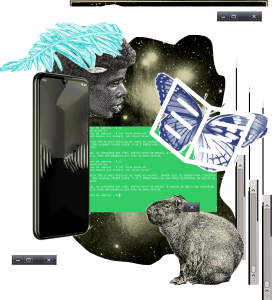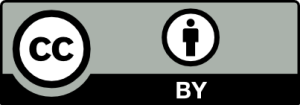
Introduction
Tech for Forests Research Group
Details of the Project
In the period between the beginning of 2021 and the middle of 2022, we investigated open-source digital infrastructures used by communities that are under the constant threat of violation of civil and environmental rights. Such infrastructure is composed mostly by applications used as tools assisting environmental protection activities.
The research featured the parallel investigation on two levels: that of developers, the creators of the tools that allow for the collection and manipulation of data; and that of users, who, besides mobilizing such data in favor of their communities, often are also the agents who input the data in the systems in question, such as deforesting records, forest fires, illegal mining, invasion of protected areas.
In the developers’ case, we can say that the all projects investigated here fall under the category formed by individuals or by a group of individuals, unlike projects constituted within an already existing company or formed as a fresh business. This kind of organization is characterized by being developed mostly by individual contributors, by a decentralized work method and by self-organization, devoid of strategies or explicitly defined and shared missions. We can further add that most of the projects we investigated were developed within non-profit organizations (not directly related to the development of infrastructure, but to socioenvironmental causes), which at some stage employ digital technologies as a tool to improve the carrying out of their goals.
Another specificity that is worth noting regards the relation between developer and user. In most of the projects we analyzed, it is not a matter of a mere commercial relationship, reduced to delivering a product to suit the client’s demands. Generally, the developers’ participation is made possible by means of an invitation articulated via previous friendship and affinity bonds. In such cases, the developer’s empathy towards social, political and environmental causes raised by the community for whom the infrastructure is intended is a necessary condition for his or her participation in the project. In this sense, the developer sees his or her own work as a contribution, albeit indirect, to the struggle committed to such causes. Besides, we can point out that the absence of such kind of committed relation can be one of the reasons why certain projects stagnate, such as when the organization hires – in a strictly professional bond – an enterprise to develop a tool that is useful in the solution of a problem has erupted at that point.
There is, therefore, a certain dose of informality in this process. This may be the case when a certain infrastructure is quickly put together in order to solve, as fast as possible, an emergency that crops up, but then issues related to documentation, publication, availability of the source code etc are relegated to the background. However, even if one cannot precisely tell whether a software whose source code is not publicly available is or is not open/free, it is treated as such by the developer, who, besides being open to make it available to whoever asks, also deems the opening of code an ethical principle.
As with the other side of this relation, that of the users, we can highlight that there is a common concern with security, which is expected, since a good part of the infrastructures studied operates as tools for the denunciation of illegal activity, meaning that an improper management of the data used and produced by the infrastructures can compromise the community’s safety. One notes, however, that coming to a sensation of safety does not take place through technical means, it is equally built within a trust relationship established between the community and those proposing the set up of the infrastructure in question. This relationship is built step by step, with workshops and participation in the communities’ daily routines. Regarding the experience of usability, we have observed that, as Portuguese is not always the users’ native language, data input by audiovisual means instead of textual means facilitates and speeds up the experience with applications. Besides, interfaces similar to that of social network applications – especially Whatsapp, generally the most popular application in the communities – are seen as friendlier.
Some of such aspects are developed in greater detail in the text Free software, sustainability and social movements: interview with a developer, in which Silvio Rhatto tells about his work in different fields towards the opening of codes and the strengthening of free software communities; a journey that includes the punk movement and also civil society organizations, problematizing issues and seeking paths in view of the sustainability of projects that favor struggles for social and environmental justice.
Finally, the conclusions we have arrived at were brought together in three articles that detail and reach beyond the points above. Below, we present a brief summary of each one, besides making them available for download in full:
In the article From anthropophagization of code to narrative hacking: how to weave incommunities?, educator Luciana Ferreira and anthropologist Marcia Nóbrega offer a text based on encounters. Both work with different social movements and communities, especially indigenous peoples and quilombolas in the Brazilian Amazon region. These are people and collectives that in the last few years have been suffering attacks to their ways of life as they are spied on and monitored by extractive capital, by data and body hunters, who are predators of common goods and of the forest. The article’s leading thread lies in the internet’s infrastructures, its cables, antennas, its physical and opaque objective appearance. Grounded on that, they seek to cartograph the strategies of capture, the subjectivities that seem blurry to the naked eye, but that are nevertheless as impacting as a shark biting an optical fiber cable. The research shows that the technologies have to be at the service of the communities – and not the opposite. To bet on alliances between the indigenous peoples who have, from their territories, different experiences and learnings regarding the internet; but also alliances with the open source communities, so that the originary peoples are able to resist and draw escape routes from the compulsory framing as mere users in the technological market as they are hampered from making their own ‘‘war machines“. The indigenous narrative hacking consists in devouring the codes, be them digital or cultural, and making of them whatever they like for their protection and entertainment. In order to enter such other domains without producing a bad body, a body for death, one needs, they taught us, to kin up – to increasingly produce more open and non-proprietary codes. In order for the sky not to fall over our heads, we argue that the opening to a common world is possible, even to those worlds established in open-recipies-codes, only if we start from a community in relation. In one word: from an incommunity.
In Technology, communication and power, Bruno Rigonato Mundim investigates digital infrastructures’ capacity for social transformation. Grounded on the network society theory by sociologist Manuel Castells, he argues that there is a relationship of interdependence between the three elements that compose the text’s title: the network communication technologies (constituting the digital infrastructures’ primordial space use) promote new ways of communication, which – because they produce meanings and influence the manner in which people think – reconfigure power relations, since the way we think and deliberate about our actions ratifies or contests the norms and values sedimented in the institutions that rule the society we live in. One notes that this transforming capacity takes place on two levels: when a digital infrastructure is employed to solve a specific problem; and when the very characteristics of network communication are manifested in the organizational forms of society, so that the resulting actions and practices are based on non-hierarchical structures, on the horizontal coordination between autonomous groups, on open access, on direct participation, on decision making established by consensus, on the free and open circulation of information. So the text closely analyses three digital open/free source infrastructures cases, which compose part of the case studies analyzed in this research: SMART, a mapping and monitoring tool for environmental protection areas; HERMES, a digital data transmission system by means of short-wave, convenient for isolated regions, where the access to telephone networks and to internet is restricted; and Alertas+, a platform that brings together and organizes – in the form of infographics and statistics – data originating from different sources about environmental degradation.
In Building communities, fighting against predatory infrastructures and developing open source softwares, Narrira Lemos de Souza writes about the relationship between the communities of users and of open and/or free software developers. The author deploys the concept of analogy as fundamental in the creation of relations in the use of the tool; Narrira understands digital and geopolitical education as important to avoid the addictive use of certain digital infrastructures, understood as predatory; and points at the possibility of using other tools for the protection of these communities’ territories. By means of a section of the history of open source she also shows that digital infrastructures, besides having undergone rapid transformations in the last few years, arrive in distinct ways to the forest protectors, with more risks and more online exposure. In order to defy the predatory digital infrastructures, other infrastructures have to be embraced and built with the communities – and thus, a spectrum of needs is carried out: more active interaction of developers with the users, greater participation of funders in the projects, plus a firm commitment by the organizations to technology for the forest defenders and, above all, more funding for all the actors involved.
